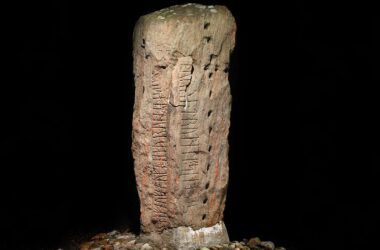For people with nerve pain from diabetes, faecal transplants may offer some relief
Shutterstock / fizkes
More than half of all persons with diabetes will experience some degree of nerve discomfort, such as tingling, numbness, or stinging, and faecal transplants have been found to be effective in alleviating this problem.
Rutgers University researchers led by Liping Zhao investigated faeces from 86 persons, 27 of whom had diabetic nerve pain and 30 of whom did not have nerve pain but did have diabetes. None of the others had diabetes.
Through genetic sequencing, researchers identified 13 bacteria that were more prevalent in persons with diabetic nerve pain than in those without. These species made up nearly 12% of the gut microbiome in patients with this neuropathy but just 2% in those without it, suggesting that a tampered gut microbiota may be at the root of nerve pain in diabetics.
So, they took faeces from healthy individuals and transplanted it into a group of 22 persons who were experiencing diabetic nerve discomfort. Ten extra patients were given a pumpkin and potato powder placebo.
Participants were evaluated both before and 84 days after therapy. Those who underwent the transplant experienced a 35% reduction in nerve discomfort, while those who did not only experienced a 5% reduction. Further genetic analysis linked the improvement to a specific kind of gut bacteria known to mitigate inflammation and thus chronic pain. People with CFS have been reported to have low levels of some bacteria, including Faecalibacterium prausnitzii.
These results imply faecal transplantation could be an effective treatment for diabetic neuropathy, for which there are currently no FDA-approved options. According to Zhao, the treatment has the potential to reduce nerve discomfort in a variety of illnesses. However, the results started to wane after three months.
Mindy Patterson of Texas Woman’s University notes that despite this, the results may inspire new approaches to relieving nerve pain caused by diabetes, such as nutritional therapies that promote healthy gut bacteria. She explains, “Diet is the most important factor influencing the composition of the gut microbiome.”
She also notes that this study did not take into account the role that nutrition and other lifestyle factors, such as exercise, have in shaping gut microbes.
FAQs
Q1: How common is nerve discomfort in individuals with diabetes?
A1: More than half of people with diabetes experience nerve discomfort, which can manifest as tingling, numbness, or stinging sensations.
Q2: What did the Rutgers University study reveal about the link between gut microbiota and diabetic nerve pain?
A2: The study identified specific bacteria in the gut microbiome of individuals with diabetic nerve pain that were more prevalent compared to those without the condition. This suggests a potential connection between gut health and nerve pain in diabetics.
Q3: How did researchers test the effectiveness of faecal transplants for treating diabetic neuropathy?
A3: Faecal transplants from healthy individuals were administered to a group of diabetic patients with nerve discomfort. Another group received a placebo. Participants’ symptoms were evaluated before and after the treatment.
Q4: What were the results of the faecal transplant treatment for diabetic neuropathy?
A4: The group receiving the faecal transplant experienced a 35% reduction in nerve discomfort, compared to a 5% reduction in the placebo group. Genetic analysis linked the improvement to specific gut bacteria known for mitigating inflammation and chronic pain.
Q5: Could faecal transplantation become a standard treatment for diabetic neuropathy?
A5: The study suggests that faecal transplants hold promise as a potential treatment for diabetic neuropathy. However, the results started to diminish after three months.







